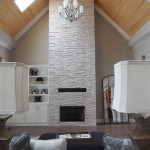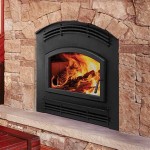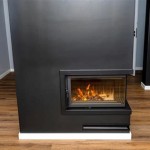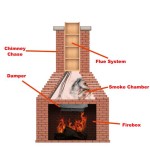Stone Fireplace Wood Mantel Shelf: A Harmonious Blend of Elegance and Functionality
The combination of a stone fireplace and a wood mantel shelf represents a classic architectural element that adds both warmth and visual appeal to a living space. This pairing seamlessly blends the rugged, timeless nature of stone with the organic beauty and customizable character of wood, creating a focal point that enhances the overall ambiance of a room. The integration of a functional shelf further elevates this design, providing a platform for decorative items, family heirlooms, and practical storage.
Stone fireplaces have long been associated with durability and a sense of permanence. From traditional fieldstone constructions to meticulously crafted stacked stone designs, the material offers a wide range of textures, colors, and architectural styles. The inherent fire-resistant properties of stone make it an ideal material for surrounding a fireplace, providing a safe and aesthetically pleasing enclosure for the flames. The visual weight of stone also contributes to a feeling of groundedness and stability within a room.
In contrast to the substantiality of stone, wood introduces a softer, more natural element. Wood mantels, available in a vast array of species, finishes, and designs, provide a counterpoint to the stone's texture and color. The warmth of wood can complement the cool tones of stone, or it can provide a contrasting element that draws the eye and adds visual interest. The ability to stain, paint, or leave wood in its natural state offers homeowners considerable flexibility in coordinating the mantel with the existing décor. Furthermore, the addition of a shelf increases the utility of the mantel, allowing for functional and decorative applications.
Aesthetic Considerations in Design
The successful integration of a stone fireplace and a wood mantel shelf relies heavily on aesthetic considerations. The type of stone selected for the fireplace will significantly influence the overall design. Rough-hewn stones might evoke a rustic or farmhouse aesthetic, while smoother, more refined stones might be more appropriate for a contemporary or transitional design. The color palette of the stone will also dictate the selection of wood tones for the mantel shelf.
For example, a fireplace constructed from grey fieldstone might be paired with a dark-stained walnut mantel, creating a striking contrast and adding a touch of sophistication. Alternatively, a light-colored limestone fireplace could be complemented by a whitewashed or natural maple mantel, enhancing the airy and open feel of the room. The dimensions of the stone fireplace also play a crucial role in determining the appropriate size and scale of the wood mantel shelf.
The style of the mantel shelf itself should also align with the overall architectural style of the room. Simple, clean lines are well-suited for modern interiors, while more ornate or detailed mantels might be more appropriate for traditional or Victorian-inspired spaces. Consider the profile of the mantel – a thicker, more substantial mantel will create a bolder statement, whereas a thinner, more streamlined mantel will blend seamlessly with the surrounding wall.
Another important aesthetic consideration is the placement of the mantel shelf in relation to the fireplace opening. The mantel should be positioned at a safe distance above the firebox to prevent scorching or damage from heat. Local building codes typically specify minimum clearance requirements for mantels. Furthermore, the height of the mantel should be proportionate to the size of the fireplace and the room. A mantel that is too high or too low will appear visually unbalanced.
The decorative items displayed on the mantel shelf can further enhance the overall aesthetic. Consider incorporating a mix of textures, sizes, and colors to create a visually appealing arrangement. Family photographs, artwork, candles, and seasonal decorations are all popular choices. It is also important to maintain a sense of balance and proportion when arranging items on the mantel. Avoid overcrowding the shelf, and leave some empty space to allow the individual items to stand out.
Functional Advantages of a Mantel Shelf
Beyond its aesthetic appeal, a wood mantel shelf provides significant functional advantages. The most obvious benefit is the provision of a display surface for decorative items. A mantel shelf offers a dedicated space to showcase cherished possessions, creating a personalized and inviting atmosphere. The ability to rotate and rearrange these items seasonally or according to personal preference allows homeowners to continuously update the look and feel of their living space.
The mantel shelf can also serve as a practical storage solution. Small books, remote controls, and other everyday items can be conveniently stored on the shelf, keeping them within easy reach yet out of sight. In some cases, the mantel may incorporate hidden storage compartments, providing even more discreet organization options. This is particularly useful in smaller living spaces where storage is at a premium.
Furthermore, the mantel shelf can act as a focal point for seasonal decorations. During the holidays, the mantel becomes a natural setting for displaying festive garlands, stockings, and other holiday-themed items. The ability to easily decorate and redecorate the mantel makes it a versatile and adaptable element of the home.
The functionality of a mantel shelf extends beyond mere storage and display. The shelf can also serve as a platform for electronic devices, such as speakers or soundbars. By integrating these devices into the mantel design, homeowners can minimize clutter and maintain a clean, streamlined aesthetic. The mantel can also be wired to accommodate electrical outlets, providing a convenient power source for lamps, charging stations, or other electronic accessories.
In kitchens, a stone fireplace with a wooden mantel shelf can provide additional storage space for spices, cookbooks, or kitchen utensils. The integration of a mantel in a kitchen environment can also add a touch of warmth and character to a space that is often dominated by utilitarian elements.
Material Selection and Construction Considerations
Selecting the appropriate materials for both the stone fireplace and the wood mantel shelf is crucial for ensuring long-term durability and aesthetic appeal. The type of stone chosen for the fireplace will depend on factors such as budget, availability, and desired aesthetic. Natural stone options include fieldstone, limestone, granite, and slate, each offering unique characteristics and visual textures. Manufactured stone veneers offer a more affordable and lightweight alternative to natural stone, while still providing a similar aesthetic.
The selection of wood for the mantel shelf is equally important. Hardwoods such as oak, maple, cherry, and walnut are popular choices due to their durability, strength, and attractive grain patterns. Softwoods such as pine and cedar are less expensive options, but they may be more susceptible to scratches and dents. The choice of wood should also take into account the desired finish. Some wood species are more conducive to staining, while others are best left in their natural state.
Constructing a stone fireplace requires specialized skills and knowledge. It is important to hire a qualified mason or contractor to ensure that the fireplace is built safely and according to local building codes. Proper ventilation is crucial for preventing smoke from entering the room, and the fireplace should be regularly inspected and maintained to ensure optimal performance.
Installing a wood mantel shelf is a less complex undertaking, but it still requires careful planning and execution. The mantel should be securely attached to the wall using appropriate hardware. The type of hardware used will depend on the construction of the wall and the weight of the mantel. It is also important to ensure that the mantel is level and properly aligned with the fireplace opening.
The construction of the mantel shelf itself can vary depending on the desired style and functionality. A simple shelf can be constructed from a single piece of wood, while more elaborate mantels may incorporate multiple pieces of wood joined together. The joints should be strong and durable, and the surface of the mantel should be smooth and free of imperfections.
Consider the use of fire-resistant materials in the construction of the mantel. While wood is naturally flammable, certain treatments and coatings can significantly improve its fire resistance. Check local building codes for specific requirements regarding fire safety.
Ultimately, the successful integration of a stone fireplace and a wood mantel shelf requires careful planning, attention to detail, and a clear understanding of both aesthetic and functional considerations. By carefully selecting materials, designing a cohesive aesthetic, and ensuring proper construction, homeowners can create a stunning focal point that will enhance the beauty and value of their home for years to come.

Barnwood Fireplace Mantel The Collection

Vail Wood Mantel Shelf Fireplace Shelves Floating Mantelsdirect Remodel Prefab

How To Build And Hang A Mantel On Stone Fireplace Shanty 2 Chic

How To Install And Decorate A Wooden Fireplace Mantel Vintage Wood Forged Iron

Fireplace Mantel Installation Before And After

Magrahearth Natural Wood Concrete Mantel Fireplace Stone Patio

Installing A Heavy Wood Mantel 2024 Beginners Guide

Large Wood Beam Mantle Shelf 78 84 Floating

Fireplace Mantels Buyers Guide By The Experts For You

Mantels Shelves Porter Barn Wood
Related Posts








